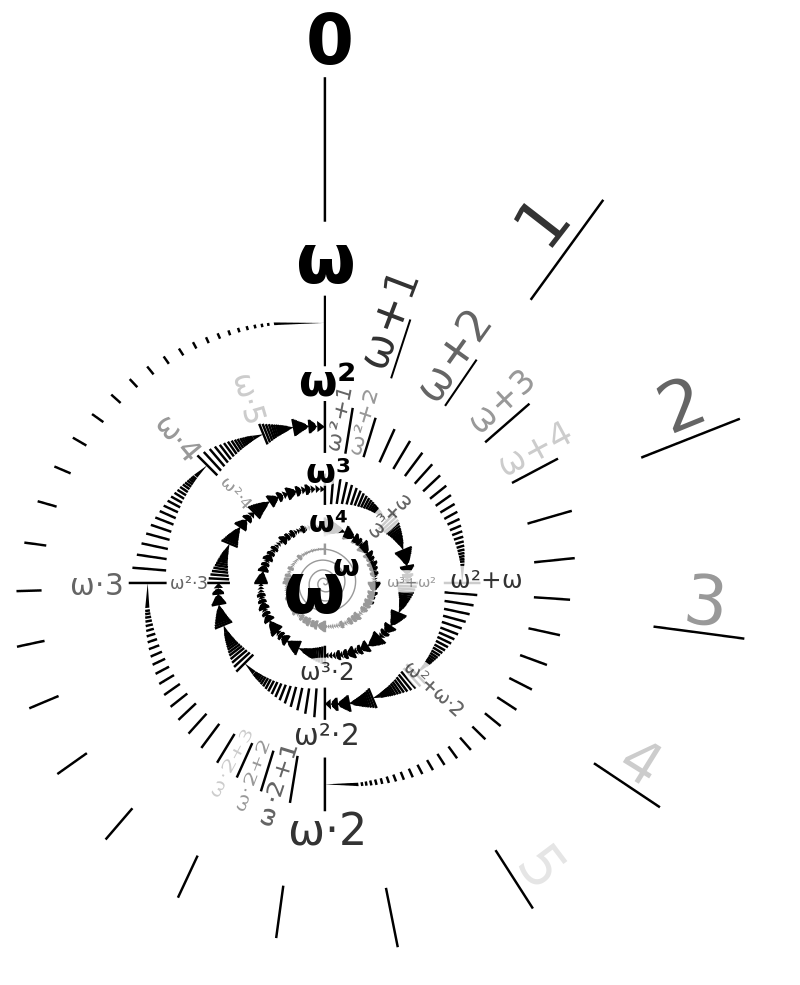Understanding Why 0.99999… = 1
…And the Foundations of Calculus

Let’s understand the simple yet beautiful reason why mathematicians say 0 point 9 recurring equals 1.
(the image above is actually an infographic of transfinite induction. But hey, it looks cool. I’ll do an explainer on transfinite induction another time!)
We are familiar with the real number line. But how do mathematicians view it? Mathematicians like to define the simple things are build up. So let’s do that.
I’ll assume you know what fractions are. Now let’s look at sequences of rationals. Let’s look at the sequence (1/2, 1/3, 1/4, 1/5, 1/6, …, 1/n, …)
If you had to pick a value for this sequence to ‘equal’, what would it be? Think about it for a minute or so.
What does a sequence equal?
If you’ve had a think, perhaps you thought, if you had to assign a value to that sequence, it would be zero. After all, it gets closer and closer to 0.
If I’d picked a different number, say 0.001, that might look accurate for a while, but by the time I’ve got to the term 1/100000000000 = 0.00000000001 in the sequence that’s looking pretty far off!
Now, what if we had to compare two sequences of rationals?
It makes some sense to say the sequences are ‘equal’ if the difference between them tends to zero.
For instance, compare the sequence of 1s, i.e. every term is a 1, (1, 1, 1, 1, 1, 1, 1, 1, 1, ….) with the sequence (0.9, 0.99, 0.999, 0.9999, 0.99999….)
The distance between these two sequences tends to zero and pretty damn fast! The difference between their first terms is 1 minus 0.9 = 0.1, and the difference between their second terms is 1 minus 0.99 = 0.01, and the difference between their Nth terms is: 0.00…..01 = 1/10¹⁰ . That’s N-1 zeros followed by a 1.
Foundations of A LOT of mathematics
What we are doing here is technically called a ‘completion of a metric space’. We take some mathematical objects, such as rationals, which have really nice properties:
(1) rationals are easy to construct
(2) we can define the distance between rationals quite easily
(3) we can define the sequences of rational numbers
The only problem is that there doesn’t necessarily exist a rational number which equals a sequence of rationals.
This is seen in numbers like root 2; assuming such a number exists, we can prove it isn’t rational! So, if we had a sequence of rationals tending to this ‘root 2’, the sequence would not ‘equal’ a rational number.
A completion of a ‘metric space’ creates new elements, defined via sequences in our original metric space. This is what we have just done! We define a real number via a sequence of rational numbers, and we say two sequences are equal if the difference between them tends to 0.
This enables us to do calculus on the new space, as we can talk about results in limits but be certain that the limit exists. It doesn’t make sense to do limit based maths simply in the rationals, because the limit of a sequence of rational numbers isn’t always rational.
What’s really amazing is that we can then take our new space and learn things about integers and fractions within it. The famous collatz conjecture is a conjecture purely about the integers. Yet Terence Tao used ‘measure theory’ (an advanced branch of calculus) to prove ‘probabilistic’ statements about ‘how often’ the collatz conjecture must hold. (see https://arxiv.org/pdf/1909.03562.pdf)
Isn’t that incredible? We start off with something simple like the integers, and create this rich realm of objects, and in this new, much more complicated space, can learn about the integers we started with?





